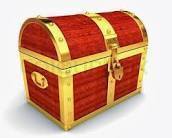Aruba

Comprehensive Financial History Report of Aruba
Basic Information
-
Country ISO Code: AW
-
Official Languages: Dutch (Nederlands) and Papiamento
-
Language ISO Codes: nl (Dutch), pap (Papiamento)
-
Current Official Currency: Aruban Florin (Florin di Aruba)
-
Currency ISO Code: AWG
Monetary History of Aruba
Aruba is an autonomous country within the Kingdom of the Netherlands since 1986 and has its own currency, the Aruban Florin, which replaced the Netherlands Antillean guilder.
Previous Currency
-
Prior to 1986, Aruba used the Netherlands Antillean guilder (ANG), which circulated in the Dutch Caribbean islands.
-
The Netherlands Antillean guilder had been issued since 1828 and was decoupled from the Dutch guilder in 1940, maintaining a fixed peg to the US dollar.
Aruban Florin (AWG)
-
Introduced in 1986, replacing the Netherlands Antillean guilder at par (1:1).
-
Subdivided into 100 cents (céntimo in Papiamento).
-
Issued and regulated by the Central Bank of Aruba (Banco Central di Aruba).
-
The Aruban Florin is pegged to the US dollar at a fixed rate of approximately 1 USD = 1.79 AWG.
Coins
-
Denominations: 5, 10, 25, 50 cents; 1 and 5 florins
-
The 5 florin coin replaced the 5 florin banknote in 1995, initially square and made of nickel-plated steel, later replaced by a round aluminum bronze coin in 2005.
-
Some coins are unique in shape and design, such as the square 50 cent coin ("yotin").
Banknotes
-
Denominations: 10, 25, 50, 100, 200, 500 florins
-
Banknotes feature vibrant designs depicting Aruba’s flora and fauna, such as snakes, frogs, turtles, and owls, along with cultural and historical elements.
-
The 2019 series introduced the 200 florin note and won the “Banknote of the Year 2019” award from the International Banknote Society for its artistic and security features.
Economic and Historical Context
-
Aruba was colonized by the Dutch in 1634, briefly occupied by the British (1805-1816), and was part of the Netherlands Antilles until gaining autonomous status in 1986.
-
With autonomy, Aruba began issuing its own currency and managing its monetary policy.
-
The economy relies heavily on tourism, oil refining, and offshore financial services.
-
The US dollar is widely accepted, especially in tourism sectors, though transactions are typically conducted in Aruban florins.
Additional Information
-
Issuing Authority: Central Bank of Aruba
-
Production: Coins are minted by the Royal Dutch Mint; banknotes are printed by Crane Currency.
-
Security: Banknotes incorporate watermarks, security threads, and color-shifting inks to prevent counterfeiting.
-
Legislation: Monetary policy and currency issuance are governed by the Central Bank of Aruba and local laws.
-
Signatures: Banknotes bear the signatures of the president and director of the Central Bank of Aruba.
Summary Table
| Currency | ISO Code | Status | Circulation Period | Issuing Authority | Main Denominations |
|---|---|---|---|---|---|
| Aruban Florin | AWG | Active | Since 1986 | Central Bank of Aruba | Coins: 5c, 10c, 25c, 50c, 1, 5 florins Banknotes: 10, 25, 50, 100, 200, 500 florins |
Curiosities
-
The square 50 cent coin (“yotin”) is a distinctive symbol of Aruban currency.
-
The 2019 banknote series received international recognition for design and security.
-
The Aruban florin is one of the few Caribbean currencies with a strong cultural identity reflected in its designs.
This report provides a comprehensive overview of Aruba’s financial history, highlighting the Aruban florin as the current official currency, its peg to the US dollar, and its economic and cultural context.
 Nilton Romani
Nilton Romani
